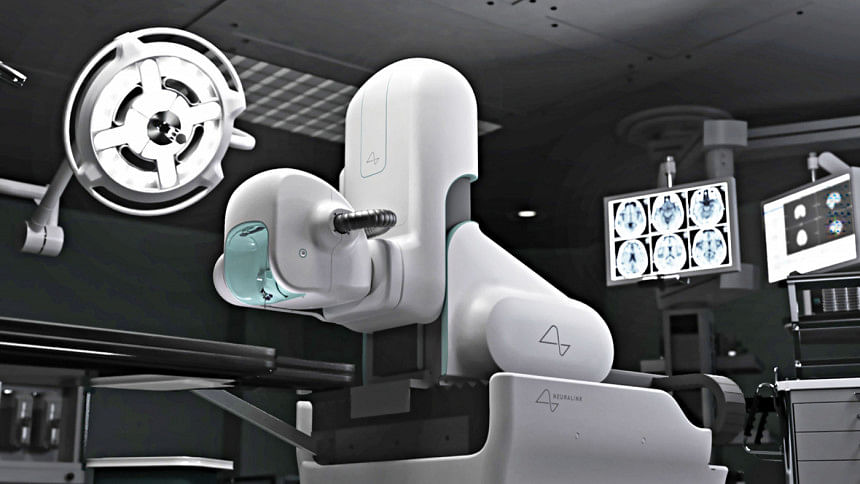Neuralink surgical robot: Take a look at Musk’s brain-machine interface

SpaceX and Tesla CEO Elon Musk has finally brought out the much-awaited Neuralink surgical robot, a revolutionary and developed brain-machine interface that can blur the red thick lines between humans and machines. This device has been developed by Musk's company, Neuralink in partnership with Woke Studio. According to Musk, the Neuralink robot can fight insomnia, memory loss, blindness and other medical conditions.
Neuralink conducted a live demo of its coin-sized device on three pigs which had different levels of interest in cooperating. Pigs were chosen for this experiment because they have dura membrane and skull structure which are similar to those of humans. Audiences could see real-time neural signals only from one of the pigs named Gertrude. Gertrude has had the brain implant for almost two months as per Elon Musk. This demonstration on the pigs was one of the first demonstrations of the tech in the action of Neuralink.
The prototype has about 1,024 thin electrodes that can penetrate the outer layer of the brain and communicate with brain cells. "It's like a Fitbit in your skull with tiny wires", said Musk. The Neuralink robot can perform different types of tasks such as providing a warning about a possible heart attack beforehand with its 24-hour battery life. This device can also play music as per the command, like a ''phone in your brain''.
Major parts of the Neuralink robot
The Neuralink surgical robot can be distinguished into three major parts such as the head, the body and the base. The robot has a part similar to a helmet as its head which houses many automated surgical tools and brain-scanning cameras and sensors to map the brain of the patient and a specific guide for the surgical needle. The helmet holds the head of the patient while carrying out the surgery. The Neuralink robot has a mint-coloured interior providing 'an anthropomorphic characteristic' to stop any invasion. There are also single-use disposable bags attached with magnets around the sphere for sterile operation and easy cleaning.
The next major part of the robot is its soft and car-like curved body with visual asymmetry. It includes all the parts that control the motion of the robot as it starts the procedure. The use of colour or the interior holds importance on this portion as well, given that white colour has been used to assure sterility. However, pinch-points, where the motion occurs, have been highlighted with colours that give a visual dynamic to it.
This high-tech device's body is attached to a base which provides a weighed support to the whole structure and saves it from tipping over. This part contains the brain-bot's computing brains, allowing the entire system to operate.
Providing medical help
As mentioned earlier, this particular robot can help fight some medical conditions. People with spinal cord or brain injuries or congenital defects can expect some help from this brain-machine device. For example, paraplegics who have lost the strength to move or sense can somehow be helped by this technology to improve the medical conditions such as paraplegia and tetraplegia.
Neuralink is forming a robotic installer to handle the entire surgical installation process. This installer is specially designed to dodge blood vessels to avoid any bleeding. According to Musk, Neuralink chips can measure pressure, temperature and movement that can indicate a potential heart attack or stroke. Neuralink is also interested to help people save and replay memories.
May not be a good idea
Neuralink robot has got its initial success on the demonstration on the pigs. However, there are still uncertainties and risks associated with this new invasive headset and its application on human beings. No doubt that invasive headsets hold a high-risk to harm the brain, the most important and delicate part of our body. "The safety and health risks of invasive implants are significant", said Sid Kouider, the founder and CEO of NextMind, a Neuralink competitor. According to him, there are more complex health problems due to these implants. For instance, there can be any kind of infection or inflammation or electrode poisoning. He also appreciated Neuralink for its attempt to work on neural interfaces. Although Musk and his company plan to develop this robot further, this recent demonstration has helped Musk get closer to his vision of allowing humans to control their brains.

 For all latest news, follow The Daily Star's Google News channel.
For all latest news, follow The Daily Star's Google News channel. 



Comments